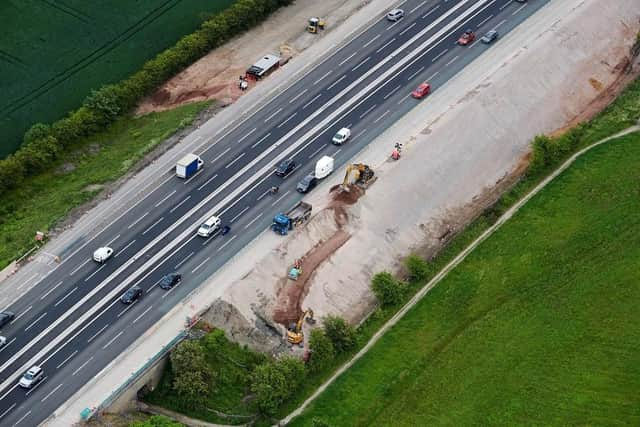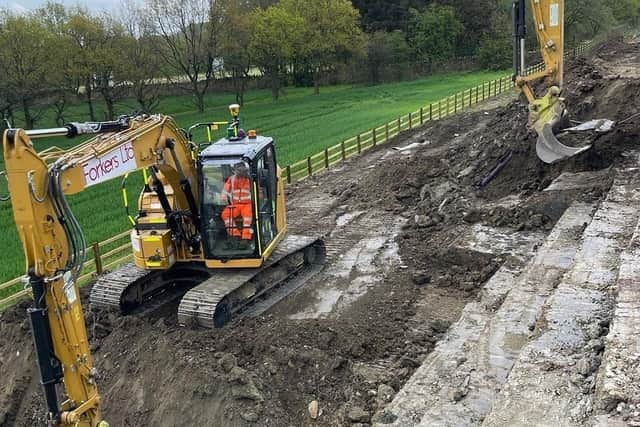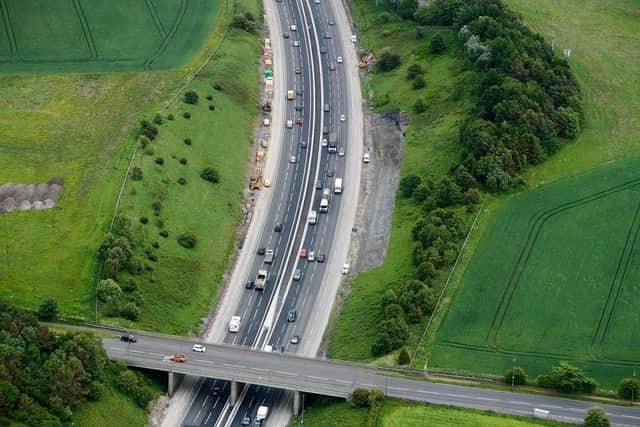Major phase of Wigan's "smart motorway" nearing completion
and live on Freeview channel 276
National Highways says final work to install a concrete central reservation safety barrier between junction 21a and junction 23 will be marked with a change of traffic management – allowing work to convert the hard shoulder along both the southbound and northbound carriageways to begin.
Conversion of the hard shoulders between junction 23 at Haydock and junction 26 at Orrell is already under way with the new concrete central reservation barrier completed between those two junctions back in February.


Advertisement
Hide AdAdvertisement
Hide AdAll new “smart motorway” projects have been paused by the Government after concerns were raised about their safety, particularly in relation to the hard shoulder being used as an extra lane to alleviate congestion. But the Wigan-Warrington one is continuing because work had already started when the decision was taken to investigate the concerns.
The completion of all work in the central reservation – which has included fitting miles of new drainage pipes as well as the concrete barrier - will allow the same traffic management arrangements to run all the way between junction 21a and junction 26 with the hard shoulder closed in both directions along the full length of the motorway to facilitate the work to turn them into running lanes.
National Highways project manager Dave Cooke said: “Completing the central reservation barrier along the full 10 miles of the project is a milestone for us and we’re now totally focused on converting the hard shoulder to deliver the much-needed capacity the project will deliver once the upgraded motorway fully opens to drivers next spring.
“We’d like to thank the 120,000 businesses, commuters and other drivers who use this section of the M6 every day for their continued support and patience as we work to complete this important investment.”


Advertisement
Hide AdAdvertisement
Hide AdTo allow the change in traffic management and other work to take place a series of 9pm to 6am overnight carriageway closures will be taking place from tonight (Monday 13 June) and into July including:
Monday June 13 southbound carriageway between junction 26 and junction 23
Tuesday June 14 northbound carriageway between junction 23 and junction 26
Monday June 20 southbound carriageway between junction 23 and junction 22


Advertisement
Hide AdAdvertisement
Hide AdTuesday June 21 northbound carriageway between junction 22 and junction 23
Monday July 11 southbound carriageway between junctions 23 and junction 22
Tuesday July 12 northbound carriageway between junction 22 and junction 23
Wednesday July 13 southbound carriageway junction 22 to junction 21a
Advertisement
Hide AdAdvertisement
Hide AdThursday July 14 northbound carriageway between junction 21a and junction 22
Diversion routes will be in place for each closure.
Work between junction 23 and junction 26 over the last couple of months has included preparing new areas for signs and gantries and digging under the motorway to connect services which help run the extra technology the upgrade will require – including some of the 92 electronic signs and 40 CCTV cameras needed to provide more reliable journeys for everyone.
Once the upgraded motorway opens drivers will also be able to use one of 10 new emergency areas as a place to stop if they need to stop in an emergency, with roadside telephones providing a direct link to the regional operations centre.
